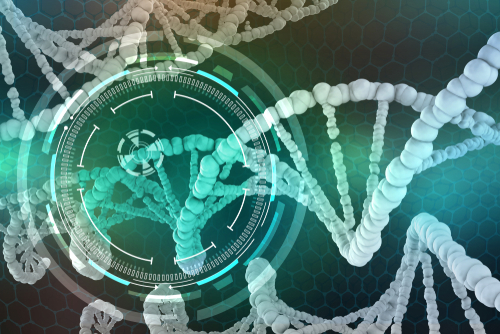Molecular Pathway Seen as ‘Intimate Tie’ Between ALS and Spinal Muscular Atrophy

Mutations that affect a particular molecular pathway essential to protein production further support reports of a link between amyotrophic lateral sclerosis (ALS) and spinal muscular atrophy (SMA).
The study detailing this finding, “The neurodegenerative diseases ALS and SMA are linked at the molecular level via the ASC-1 complex,” was published in the journal Nucleic Acids Research.
Researchers at the Reed Lab at Harvard University had previously shown that the fused in sarcoma (FUS) protein — whose mutated gene is one of the most common genetic defects underlying familial ALS — interacts directly with the SMN1 protein, problems in which are the main cause of SMA. Awareness of this interaction provided the first molecular evidence of a connection between these neuron diseases.
SMA is a neurodegenerative disease characterized by progressive muscle weakness caused by a loss of specialized nerve cells (motor neurons) in the spinal cord and area of the brain connected to the spinal cord.
Now, using molecular biology techniques that modify the genome, including the gene editing tool CRISPR-Cas9, and HeLa cells as a model, a team of Harvard researchers further strengthened this link, showing that the activating signal cointegrator 1 (ASC-1) complex is affected in both diseases.
Many gene sequences include regions — called introns — that are not meant to code for proteins, and must be removed from the coding sequence before translation (protein production) occurs. This process, called splicing, is highly complex and tightly regulated in the cell. Many diseases, including SMA, are associated with a splicing mechanism malfunction.
For splicing to take place, many proteins also must interact, including proteins in the ASC-1c complex and a specific enzymatic (special proteins) machinery.
The researchers show that this enzymatic machinery contains more than a third of all the ALS-causative proteins that have been described to date, as well as five proteins linked with SMA.
It is known that mutations in two (TRIP4 and ASCC1) of the four components of the ASC-1 complex cause a severe form of SMA. Researchers now show that these SMA-causative mutations, as well as a mutation in FUS (which causes ALS), prevent the interaction of all the elements necessary for splicing to occur.
These findings support the idea that these diseases are linked by similar starting mechanisms. Moreover, data suggest that disruption of pathways regulating splicing machinery, like DNA repair, are potential key factors underlying ALS and SMA — a recent study showed that FUS mutations affect the ability of motor nerve cells to repair damage to their DNA.
Accumulation of DNA damage over time in nerve cells is thus a likely mechanism contributing to neurodegeneration and to the late onset of ALS, the researchers said.
Study results suggest that “ALS and SMA are more intimately tied to one another than previously thought, being linked via the ASC-1 complex,” they concluded.
These findings work could pave the way for the discovery of new targets to treat ALS and SMA.






